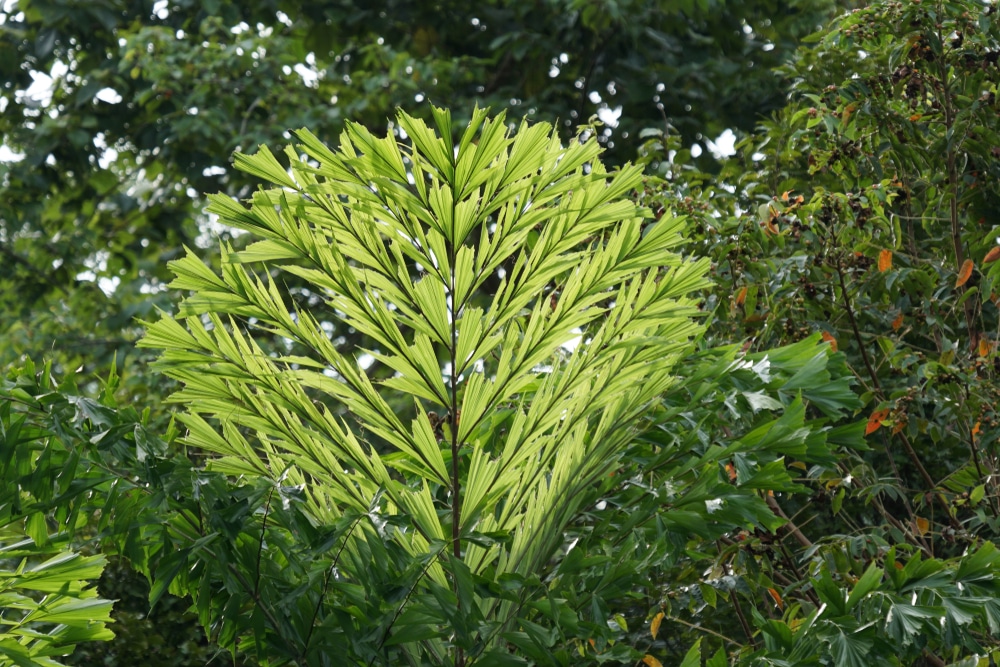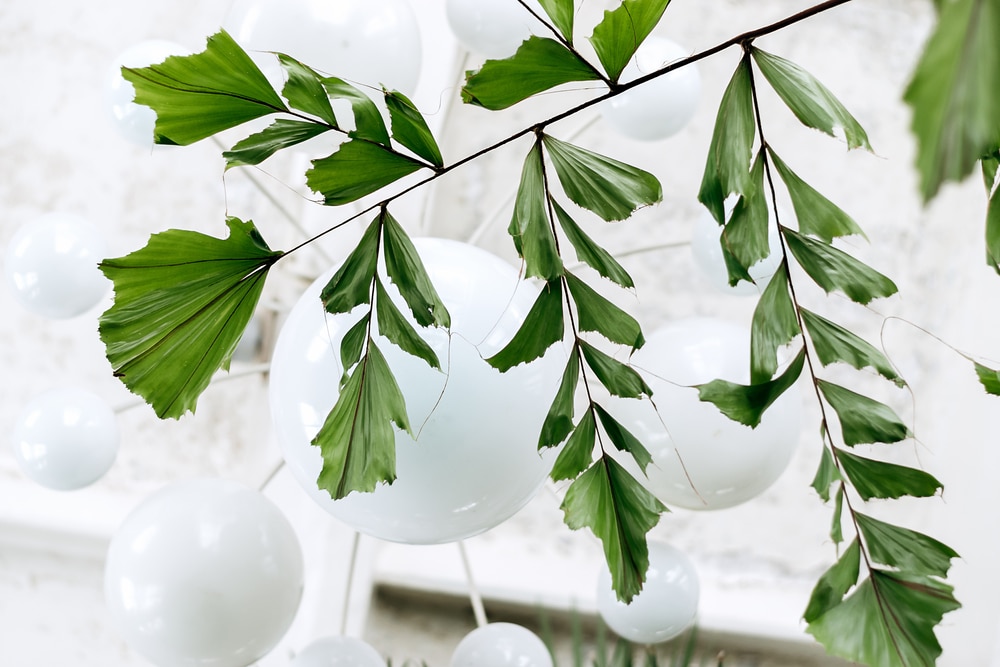The Fishtail Palm Tree is a beautiful and pretty common house plant. Although it still requires a certain amount of care, the Fishtail Palm Tree is a pretty easy to look after natural house decoration.
| Botanical Name | Caryota urens |
| Common Name | Fishtail Palm Tree |
| Plant Type | Perennial |
| Flower Color | Not applicable to this plant |
| Size When Mature | Approximately 96 to 240 inches in height
Approximately 120 to 420 inches in width |
| Bloom Time | Spring/Summer |
| Sun Requirements | Prefers partial shade but can handle full exposure to sunlight |
| USDA Hardiness Zones | 9 to 11 |
| Soil PH Range | 6.0 to 7.5 |
| Soil Type | Moist but well drained |
| Water Needs | Medium |
| Native Area | Asia, Northern Australia and the South Pacific |
What you Need to Know About the Fishtail Palm Tree
The Caryota urens is a beautiful, deep green plant that is most commonly known as the Fishtail Palm Tree. There are many different species of it and it is native to Asia, Northern Australia and the South Pacific.
How to Care for the Fishtail Palm Tree
Here’s everything you need to know about growing and caring for a thriving Fishtail Palm Tree
Light
For Fishtail Palm Trees to properly develop and flourish they require quite large quantities of light. Furthermore, they do best when they are provided with bright but indirect light as it ensures that they have the strongest possible growth and longest possible lifespan.
This means that you should try and locate your Fishtail Palm Tree in a place that gives it partial shade. That being said, this plant is not too picky and is also perfectly capable of tolerating full exposure to the sunlight if it is necessary.
Water and Soil Needs
The Fishtail Palm Tree has pretty average, medium watering needs. This means that it needs to be watered once a week when the weather is hotter, during the spring and summer.
In addition to this, this plant only requires water twice a month during the winter and other colder months as it is dormant. Overall, your Fishtail Palm Tree will be happiest if it receives a steady and gentle income and supply of moisture.
Furthermore, the Fishtail Palm Tree will flourish and grow to the best of its abilities if the soil it is planted and it grows in is peat-based or coir-based. Furthermore, you can add more drainage material to your plant’s soil if you want to try and extend its lifespan. For example, both pine bark and perlite are great at encouraging longer lasting soil.
Temperature Requirements

Fertilizer
The best fertilizer to use on a Fishtail Palm Tree is a granular palm fertilizer. You could also try using a weak liquid fertilizer but it is not likely to work as well and efficiently as the granular palm fertilizer.
Furthermore, it is recommended that you fertilize this plant three times a year, during the spring, summer and fall. As well as this, it is preferable that you never try and fertilize your Fishtail Palm Tree during the winter.
Common Diseases
Things such as spider mites, fungal leaf spots, nutrient deficiencies and scale insects can become a potential problem and cause some harm to your Fishtail Palm Tree, just like with most other perennial plants and trees. That being said, none of these are particularly common or likely to occur in your Fishtail Palm Tree if it is looked after properly.
Final thoughts:
Overall, the Fishtail Palm Tree is a gorgeous and pretty easy to take care of shrub. This plant is likely to maintain its radiance and beauty for as long as twenty five to thirty years if all of the above requirements and recommendations are executed or at least taken into consideration.

